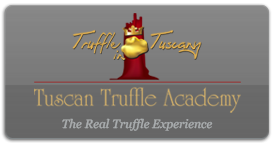| Typical products of Tuscan tradition and of my family: |
| In this page, I want to summarize those products which call to mind immediately the word “Tuscany”, that they accompany you and they mix with perfumes of a unique land of the world and that they tell you the history and the culture of the people and the warmth of the moments like at the table becomes a meeting moment, of life and of love. |
| |
| |
|
|
| Tuscan Olive Oil |
|
|
A perfect combination between climate and soil, makes olive oil of Tuscany one of the most beloved products and researched in the world. Tradition wants that its collection must done by hand or hitting the plant; listening the “wises” we understand how also the tradition and the experience affect about quality: “the olives should be collected not too unripe or too ripe, namely in the moment in which they begin to take that particular shining colour and, fresh we bring immediately to the millstone if we want good oil”.
It is also for this reason if the olive oil is the historical base and current for all of the typical dishes of tradition.
Indicative period for collection: November
Typical dishes for a quality degustation: “Fettunta” (toasted bread and rub it with a little bit of garlic, plus a string of olive oil); “Fagioli al fiasco” (beans cooked into a special form glass bottle) |
|
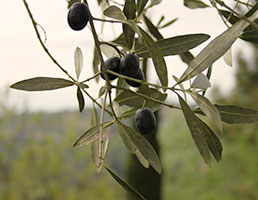
Product of Tuscany: Olive Oil |
| |
|
|
| “Bistecca” (t-Steak) |
|
|
The word Bistecca derives from “BIS” (two parts of meat) and “STECCA” (bone at the centre) and then it derives that it is thick at least some centimeters.
The steak is one of the dishes most known into the world and, to be recognized as “Florentine Steak”, comes from beef, deriving from animals grown up without “nutrition stress” and the meat have to undergo for dry aging for a minimum of 3 weeks and, it should have a thickness of minimum 2 fingers for a better cooking. Important note: In Tuscany all of the things called like bistecca means meat with bone; at the restaurant ask a little meat slice or a meat chop, corresponds to a slice of meat without bone and with little thick. |
|
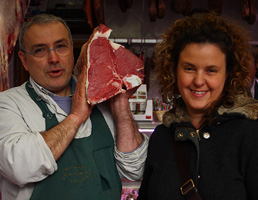
Typical Tuscan Meat: "Florentine Steak" |
| |
|
|
| The Artichoke |
|
|
According to the legend, the artichoke was born from Zeus who, furious for being rejected by a beautiful nymph, he converted her to this fruit, preserving untouched all of the features of beloved: hard and prickly outside but soft-hearted and sweet, like the feature of the girl, the green purple colour like her eyes and an elegant body.
The artichoke has digestive properties, diuretic, detoxifying, it is a cure-all for the liver, prevents arteriosclerotic and cardiovascular diseases and it is studied like food antitumor.
Excellent the quality of our territory, so much to become researched and used, raw or cooked, for dishes vernal mainly.
Indicative period: April - May
Typical dishes: Fried artichokes; Artichoke for “pinzimonio”: eaten raw and dipped into the oil and salt; Pasta and artichokes; Artichokes' flan; |
|
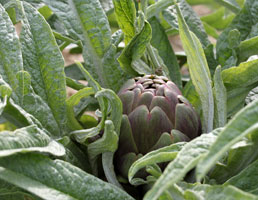
Vegetable of Tuscany: Artichoke |
| |
|
|
| The Tomato |
|
|
The tomato is native from Central America where today are located Messico and Perù; in Europe and in Italy arrives only at the end of 1500 and, finding good climatic conditions, changes its original colour yellow/gold (from here the name “Pomo d'oro”= “gold fruit”) passing to the actual and most known red one.
Initially was supposed it was a poisoinous plant because was similar to Morella herb (Solanum Nigrum) and in fact, in doubt, it was used as decorative plant from rich people whom were situated into nice jars that ornamented windows and courtyards.
In a short time, however the tomato was used first like farming with healing properties (famous its wealth of vitamins and minerals) and slowly it becomes the absolute protagonist of Italian food and wine tradition and in particular of that Tuscany.
Indicative period: June 15th - October 15th
Typical dishes: Pasta with fresh tomato and basil.
Pizza; “Pappa al pomodoro”: soup with bread and tomato; “Panzanella”: typical summer dish with fresh tomato, bread, onion, basil, cucumber and olive oil. |
|
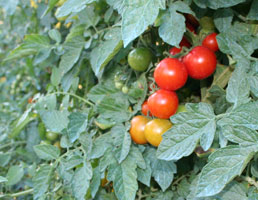
Vegetable of Tuscany: Tomato |
| |
|
|
| Zucchini |
|
|
It is for sure one of the most used food into the Tuscan summer kitchen: a very low caloric value and a composition consists of 95% of water, vitamin A and C, makes that zucchini is one the fundamental elements of Mediterranean diet.
Renown for its anticancer properties, useful for treating urinary infections, cardiovascular disease and diabetes, also favors the tan and delays the skin aging.
Zucchini plant produces monosexual flowers: the male flowers are sterile, but are needed to pollination of female flowers, starting from whom develops the fruit. Pollination happens for insects or for wind action (given the proximity on the same plant regarding male and female flowers).
Indicative Period: May - September.
Typical dishes: Pasta with zucchini and shrimps; Zucchini flowers fried; Stuffed zucchini; Zucchini's flan; |
|
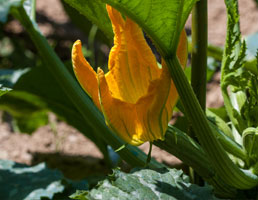
Vegetable of Tuscany: Marrow |
| |
|
|
| The Aubergine |
|
|
Originally from India arrives in Italy at the beginning of 4th Century and initially it is called “Petonciana” but after, to avoid “misunderstanding about its properties” the initial part of the name is replaced by the word “mela=apple” (the name of the fruit for excellence).
Tuscan's land and climate, it makes one of the most used vegetable during summer period seeing it has capacity to absorb very good the dietary fat, including olive oil: raw, it has bitter taste but the cooking makes it easy to digest and enhances the flavor, allows thereafter the preparing of rich and tasty dishes.
Indicative period: June-September.
Typical dishes: Pasta with aubergine; Roasted aubergine with olive oil; “Parmigiana” of aubergines (like lasagna done without pasta but with vegetables) |
|
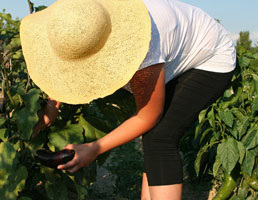
Vegetable of Tuscany: Eggplant |
| |
|
|
| The Cabbage |
|
|
Plant so rich of minerals and with a high satiating power; in the past it was frequently to be used by sailors for long journeys precisely for its properties and its easy of preservation.
In the Italian kitchen and in that Tuscan in particular, it is matched to legumes or carbohydrates (bread): the “ribollita” or “Tuscan Bread's soup” it is, maybe, the most classic example, the poor dish for excellence! The name derives exactly in that female peasants of Tuscan country prepared with a big quantity and afterthat boiled twice into the pan and eaten in the next days; that's the substantial difference with a normal bread soup: we heat up twice just to make it more tasty!
Indicative period: Any season of the year.
Typical dishes: “Ribollita” = cooked twice |
|
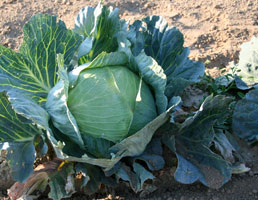
Vegetable of Tuscany: Cabbage |
| |
|
|
| The Leek |
|
|
The leek is a vegetable of very ancient memory: native from the Mediterranean region, previously Egyptians and Romans were big consumers, just because considered a food detox and with diuretic.
The Roman Emperor was nicknamed “Porrofago” because was greedy of this vegetable who used to clear his throat.
Regarding the leek we use the white part and we unwrap the green leaves; it is very utilized for winter kitchen of Tuscany for its particular taste which makes it a vegetable able to become any type of dish rich and tasty.
Indicative period: October-March.
Typical dishes: Pasta with leeks and sausage; Pasta with leeks and fish; Raw leek to dip (pinzimonio); |
|
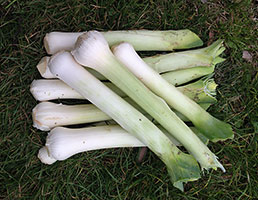
Vegetable of Tuscany: Leeks |
| |
|
|
|




